It looks like you're using an Ad Blocker.
Please white-list or disable AboveTopSecret.com in your ad-blocking tool.
Thank you.
Some features of ATS will be disabled while you continue to use an ad-blocker.
5
share:
Well I hope this will fit in this Forum
if not I will allow a moderator to move this thread into the exact location that fits it
Recently I have gotten an Awesome Deal with someone i know as he was going the throw a Treasure trove into the trash what they are is Comics made in the early 60s to (Majority) Late 60s and Some made in the 70s to 1979 and a Few that were made in the 50s ! as many have gotten my attention there was one that did
as it was claimed to be a hoax the pictures of a USAF Flying DISK
Here is a Comic made in 1953 that is almost the exact Copy of that USAF Flying Disk!!
This is Why
Hoax or is it Real ?
(markosun.wordpress.com)
Top Secret United States flying saucers?
markosun.wordpress.com...
(laesieworks.com)
U.S. built disc aircraft?
(supposedly 1946 - 1967)
www.laesieworks.com...
The Comic !!
UFOPOP == Comics 1953 Space Adventures issue no 4
www.ufopop.org.../SpaceAdventures04.jpg
---------------------------------------------------------------------------------------------------------------------------------------------------- if you interested to see comics with Ufo's in pop culture !
Flying Saucers In Popular Culture - Comic Books === From 1938 to 2011
www.ufopop.org...
Here are a few that got my Attention from this Site UFOPOP.ORG
Pretty close to a modern UFO!!
Tip-Top Adventures Of Buck Rogers
No.8
August 1, 1938
www.ufopop.org.../AdventuresOfBuckRogers08.jpg
Well something you seen in the Movie Dune !
Publicaciones Herrerias Chamaco
No.211
February 19, 1945
Mexican daily comic
www.ufopop.org.../chamaco2111.jpg
Few months after Roswell
Will Eisner The Spirit
nn
September 28, 1947
www.ufopop.org.../Spirit1947.jpg
Shadow Comics
No.10
January 1948
© 1947 Street & Smith Publications, Inc.
And why is this one so Important below!!
Fiction House Wings Comics
No.112
1950
as to Why !! kinda similar does it not!!
Here's the Diagram


www.thelivingmoon.com...
Source !! to that
The Living moon . COM
www.thelivingmoon.com...
Well I Have 6 Genesse & Budweiser Boxes Full of near mint condition of Comics from the 60s to late 70s to go through and most of them are sort of Alien Ufo related in some way or another the trend of the day im guessing
So here ya go what do you think ATS
as I would love to have ATS make a Forum of Ufo Comics and Conspiracy's that could be linked to them!
if not I will allow a moderator to move this thread into the exact location that fits it
Recently I have gotten an Awesome Deal with someone i know as he was going the throw a Treasure trove into the trash what they are is Comics made in the early 60s to (Majority) Late 60s and Some made in the 70s to 1979 and a Few that were made in the 50s ! as many have gotten my attention there was one that did
as it was claimed to be a hoax the pictures of a USAF Flying DISK
Here is a Comic made in 1953 that is almost the exact Copy of that USAF Flying Disk!!
This is Why
Hoax or is it Real ?
(markosun.wordpress.com)
Top Secret United States flying saucers?
markosun.wordpress.com...
(laesieworks.com)
U.S. built disc aircraft?
(supposedly 1946 - 1967)
www.laesieworks.com...
The Comic !!
UFOPOP == Comics 1953 Space Adventures issue no 4
www.ufopop.org.../SpaceAdventures04.jpg
---------------------------------------------------------------------------------------------------------------------------------------------------- if you interested to see comics with Ufo's in pop culture !
Flying Saucers In Popular Culture - Comic Books === From 1938 to 2011
www.ufopop.org...
Here are a few that got my Attention from this Site UFOPOP.ORG
Pretty close to a modern UFO!!
Tip-Top Adventures Of Buck Rogers
No.8
August 1, 1938
www.ufopop.org.../AdventuresOfBuckRogers08.jpg
Well something you seen in the Movie Dune !
Publicaciones Herrerias Chamaco
No.211
February 19, 1945
Mexican daily comic
www.ufopop.org.../chamaco2111.jpg
Few months after Roswell
Will Eisner The Spirit
nn
September 28, 1947
www.ufopop.org.../Spirit1947.jpg
Shadow Comics
No.10
January 1948
© 1947 Street & Smith Publications, Inc.
And why is this one so Important below!!
Fiction House Wings Comics
No.112
1950
as to Why !! kinda similar does it not!!
Here's the Diagram


www.thelivingmoon.com...
Source !! to that
The Living moon . COM
www.thelivingmoon.com...
Well I Have 6 Genesse & Budweiser Boxes Full of near mint condition of Comics from the 60s to late 70s to go through and most of them are sort of Alien Ufo related in some way or another the trend of the day im guessing
So here ya go what do you think ATS
as I would love to have ATS make a Forum of Ufo Comics and Conspiracy's that could be linked to them!
edit on 11-7-2011 by Wolfenz because:
(no reason given)
edit on 11-7-2011 by Wolfenz because: Fixed Image links
Besides being pretty cool comics...not sure what the point is...
flying saucers have been in comics for quite a long time...care to clarify?
And oh, that website you linked to had a good mix of public knowledge crafts tested, a couple movie clips (I think the first one was from Taken), and hoaxes:
[atsimg]http://files.abovetopsecret.com/images/member/7099f5598b68.jpg[/atsimg]
=
[atsimg]http://files.abovetopsecret.com/images/member/d5adbaa50d97.jpg[/atsimg]
flying saucers have been in comics for quite a long time...care to clarify?
And oh, that website you linked to had a good mix of public knowledge crafts tested, a couple movie clips (I think the first one was from Taken), and hoaxes:
[atsimg]http://files.abovetopsecret.com/images/member/7099f5598b68.jpg[/atsimg]
=
[atsimg]http://files.abovetopsecret.com/images/member/d5adbaa50d97.jpg[/atsimg]
Originally posted by SaturnFX
Besides being pretty cool comics...not sure what the point is...
flying saucers have been in comics for quite a long time...care to clarify?
And oh, that website you linked to had a good mix of public knowledge crafts tested, a couple movie clips (I think the first one was from Taken), and hoaxes:
[atsimg]http://files.abovetopsecret.com/images/member/7099f5598b68.jpg[/atsimg]
=
[atsimg]http://files.abovetopsecret.com/images/member/d5adbaa50d97.jpg[/atsimg]
The Point MY Point!!
it is similar to the 1953 space adventures issue no 4
Yes Flying Saucers are in comics since 1938 as i already posted that!!
Some of those comics were showing thing that were even known then or until it was Unclassified that is what the point is
and for the USAF Flying Disk Hoax The Photos are Fake but the Idea could be real or does exist ! have you look at the Cover of the Comic i have posted and doesn't look similar !! ?? of the 1953 Space Adventures issue 4 Comic are you refuting that it doesn't look similar ? and the Comic that look like the Nuclear Space THE Lenticular Entry Vehicle
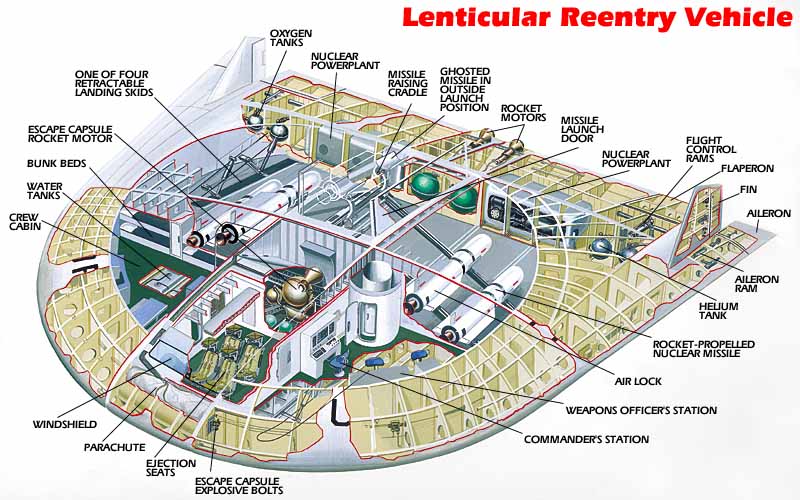
www.ufopop.org.../Wings112.jpg
Of this Comic of a SpaceShip that is so much similar its mouth dropping ! well to me anyways! right to the Shape and wings !!!!
Here it is again now Burn that Image into your mind then look at the image link below
Fiction House Wings Comics
No.112
1950
© 1950 Wings Publishing Co., Inc.
if you think NASA has Copied the Artist that made it from the Comic!!
Could be Ive Seen Video of a a Rocket that went to the Moon that was influence by a guy a Scifi Writer named Jules Verne that NASA Copied even the Close Locations in that fictional Book called From the Earth To The Moon !
From the Earth to the Moon
From Wikipedia, the free encyclopedia
en.wikipedia.org...
Similarities to NASA's Apollo program
The real-life Apollo program bears similarities to the story in several ways:[4]
Verne's cannon was called Columbiad; the Apollo 11 command module (Apollo CSM) was named Columbia.[5]
The spacecraft crew consisted of three persons in the book and each Apollo mission.
The physical dimensions of the projectile are very close to the dimensions of the Apollo CSM.
Verne's voyage blasted off from Florida, as did all Apollo missions. (Verne correctly states in the book that objects launch into space most easily if they are launched towards the zenith of a particular location, and that the zenith would better line up with the moon's orbit from near the Earth's equator.
In the book Florida and Texas compete for the launch, with Florida winning.) The cost of the program in the book ($12.1 billion US in 1969 dollars) is almost similar to the total cost of the Apollo program until Apollo 8 ($14.4 billion US dollars)
Both the spacecraft in the book and all Apollo craft were recovered by U.S. Navy ships.
Verne peculiarly describes the projectile of the Columbiad as made of aluminium, instead of steel that would have been usual for the time. Columbia was built mainly of aluminum alloys.
edit on 11-7-2011 by Wolfenz because: (no reason given)
edit on 11-7-2011 by Wolfenz
because: (no reason given)
Unless you Consider Jules Verne has seen into the Future like a Man Named Nostradamus
edit on 11-7-2011 by Wolfenz because: (no reason
given)
SaturnFX
Here are those Images from 1874 that is so similar of the Apollo Space mission right down to the Saturn Rocket!
Enjoy !
www.sil.si.edu...
ohh by the way you are correct on that link it from the movie Taken aka Roswell spacecraft from the movie
Here are those Images from 1874 that is so similar of the Apollo Space mission right down to the Saturn Rocket!
Enjoy !
www.sil.si.edu...
ohh by the way you are correct on that link it from the movie Taken aka Roswell spacecraft from the movie
edit on 11-7-2011 by Wolfenz because: (no reason given)
reply to post by Wolfenz
hi - i believe you are reasing far too much into comics , please read this there was a lot of serious work into unconventional aircraft before the dates of your comics that illustrators could draw on [ pun ]
thats before allowing thier imagination to run riot
hi - i believe you are reasing far too much into comics , please read this there was a lot of serious work into unconventional aircraft before the dates of your comics that illustrators could draw on [ pun ]
thats before allowing thier imagination to run riot
Originally posted by ignorant_ape
reply to post by Wolfenz
hi - i believe you are reasing far too much into comics , please read this there was a lot of serious work into unconventional aircraft before the dates of your comics that illustrators could draw on [ pun ]
thats before allowing thier imagination to run riot
Well now I could get into Movies if you want or Scifi Book too..
Yeah I can show you Sci-FI Writers Theory's and Ideas that became a reality from Influence of thos Books Short Stories Magazine and COMICS!! you have Shown Me the Flying Wing Site
Now I will Show You !
FICTION is the MOTHER of INVENTION !!
Here is a a Site you need to look at
Technovelgy
Where Science Meets Fiction
www.technovelgy.com...
Technovelgy Timeline
www.technovelgy.com...
Well of what Ive Threaded Could be Inspiration of those Crafts from Scifi Books or COMICS!! that Those crafts became a reality ! Skunk Works Secret Crafts that were on the Drawing Board
Warner von Braun & Member of NASA Didn't see Jules Verne's Vision of
From the Earth to the Moon
en.wikipedia.org...
as i said before let look again! at the 1874 illustration on the front cover of that book by Jules Verne !!
Shall We!!
I see a Capsule and 1st 2nd 3rd Stages ! and Somewhat like the Saturn Rocket !
Lets look inside that book and see the similarity's of the American Space race
missions from Mercury Gemini, Apollo
Author:
Jules Verne (1828-1905)
Title/Imprint:
From the Earth to the Moon Direct in Ninety-seven Hours and Twenty Minutes, and a Trip around it. Trans. by Louis Mercier and Eleanor King (De la terre à la lune)
Scribner, Armstrong: New York , 1874
www.sil.si.edu...
If you can NOT compare the similarities then you have a problem my friend
Similarities to NASA's Apollo program
T
The real-life Apollo program bears similarities to the story in several ways:[4]
Verne's cannon was called Columbiad; the Apollo 11 command module (Apollo CSM) was named Columbia.[5]
The spacecraft crew consisted of three persons in the book and each Apollo mission.
The physical dimensions of the projectile are very close to the dimensions of the Apollo CSM.
Verne's voyage blasted off from Florida, as did all Apollo missions. (Verne correctly states in the book that objects launch into space most easily if they are launched towards the zenith of a particular location, and that the zenith would better line up with the moon's orbit from near the Earth's equator. In the book Florida and Texas compete for the launch, with Florida winning.)
The cost of the program in the book ($12.1 billion US in 1969 dollars) is almost similar to the total cost of the Apollo program until Apollo 8 ($14.4 billion US dollars)
Both the spacecraft in the book and all Apollo craft were recovered by U.S. Navy ships.
Verne peculiarly describes the projectile of the Columbiad as made of aluminium, instead of steel that would have been usual for the time. Columbia was built mainly of aluminum alloys.
(nationalgeographic.com)
8 Jules Verne Inventions That Came True (Pictures)
news.nationalgeographic.com...
Well Well what do you know ifound this basically what those Designs Art Work of Fiction Comics
or Just maybe a Word got out to of those Secret Projects to the Comic Scene that's more Plausible
Especially the Lenticular Reentry Vehicle
and the USAF Saucer (wingless)
( DVICE )
10 real flying saucer designs that were made here on Earth
dvice.com...
what were thought were hoax's well here it is
basically of what ive posted
well close to that USAF Saucer
Request help identifying all govt. & civilian saucer-related projects!, page 1
www.abovetopsecret.com...
Here is a interesting Book
Secret Projects: Flying Saucer Aircraft
www.ebook3000.com...
Here a little Info!
Going back to the ( 1953) Space Adventures issue N0 4 Comic
and seeing this
USAF 40-Foot Flying Disc (1958)
www.fantastic-plastic.com...
A little Info ?
or Just maybe a Word got out to of those Secret Projects to the Comic Scene that's more Plausible
Especially the Lenticular Reentry Vehicle
and the USAF Saucer (wingless)
( DVICE )
10 real flying saucer designs that were made here on Earth
dvice.com...
what were thought were hoax's well here it is
basically of what ive posted
1. Couzinet RC360 Aerodyne Frenchman René Couzinet designed this flying saucer with two counter-rotating discs that spun around the perimeter of the craft. Each disc had 50 airfoil vanes to provide lift and control. The pilot sat under the glass bubble in the middle, and six turbojet engines embedded in the body provided the lifting power while another engine underneath was for forward thrust. (Image 1 of 2)
2. Lenticular Reentry Vehicle U.S. government documents declassified in 2000 reveal that back in the '60s, the U.S. military was working on a way to deliver nuclear missiles from orbit with a manned flying saucer called the lenticular reentry vehicle, or LRV. Launched on top of a conventional rocket, the LRV could spend six weeks in orbit while supporting a crew of four, relying on its saucer shape to dissipate heat when returning to Earth and acting as a wing to glide to a landing. (Image 1 of 2)
8. Avro Project Y Canada, as it turns out, is somewhat of an expert on building flying saucers. Or at least, they’ve had more realistic experience with them than anyone else (that we know about!). Avro Canada’s Project Y was an attempt at a VTOL fighter jet, which used jet engines to spin a giant turbine inside the body of the craft. Channels inside the airframe directed airflow from this turbine backwards to provide thrust. (Image 1 of 2)
well close to that USAF Saucer
Request help identifying all govt. & civilian saucer-related projects!, page 1
www.abovetopsecret.com...
edit on 13-7-2011 by Wolfenz because: (no reason given)
edit on 13-7-2011 by Wolfenz because: (no reason given)
Here is a interesting Book
Secret Projects: Flying Saucer Aircraft
www.ebook3000.com...
Here a little Info!
Going back to the ( 1953) Space Adventures issue N0 4 Comic
and seeing this
USAF 40-Foot Flying Disc (1958)
www.fantastic-plastic.com...
A little Info ?
In 1967, former U.S. Navy aviator and aviation writer Jack D. Pickett and his business partner Harold Baker visited MacDill Air Force Base in Tampa Florida to gather information for an Air Force-sponsored article on historical experimental aircraft. At the edge of the base, they were shown four decommissioned X-planes -- all of them flying discs -- measuring 20, 40, 70 and 116 feet in diameter. Through interviews with various base personnel, Pickett and Baker concluded that, during the 1950s, the USAF had developed several models of jet-powered flying discs for reconnaissance flights over the Soviet Union. The discs had supersonic capabilities and had, on occasion, reached heights that approached the edge of space (50 miles). Many disc flights -- particularly those of the highly successful 40-foot version -- were no doubt responsible for many "Flying Saucer" reports during the period. By the early 1960s, all had been retired in favor of more advanced aircraft. The proposed article was ultimately cancelled, no doubt for reasons of national security. Years later, the amazing story was published by Michael Schratt, who provided the background material for this model kit.
edit on 13-7-2011 by Wolfenz because: (no reason given)
and for Saturn FX Amusement ! LOL
IS IT A UFO? NO, IT’S A FANTASTIC FLYING DISC!
www.scalemodelnews.com...
but Some Believes there did exist ! like these Guys
Flying Saucers-For Real!
(The secret truth behind U.S. built flying wing disc aircraft)
By Jack D. Pickett and Michael H. Schratt February 2003
www.ufowisconsin.com...
IS IT A UFO? NO, IT’S A FANTASTIC FLYING DISC!
www.scalemodelnews.com...
but Some Believes there did exist ! like these Guys
Flying Saucers-For Real!
(The secret truth behind U.S. built flying wing disc aircraft)
By Jack D. Pickett and Michael H. Schratt February 2003
www.ufowisconsin.com...
edit on 13-7-2011 by Wolfenz because: (no reason given)
reply to post by Wolfenz
The AVRO Project Y was almost completed before corporate espianage lead to project failure and the remaining pieces were "acquired" by American officials.
Of course this was many years after the Soviets started flying saucers over the US (like over Washington in 1947). The US was behind in the technology since it was the Soviets who acquired the tech after WWII.
The AVRO Project Y was almost completed before corporate espianage lead to project failure and the remaining pieces were "acquired" by American officials.
Of course this was many years after the Soviets started flying saucers over the US (like over Washington in 1947). The US was behind in the technology since it was the Soviets who acquired the tech after WWII.
Originally posted by Dimitri Dzengalshlevi
Of course this was many years after the Soviets started flying saucers over the US (like over Washington in 1947). The US was behind in the technology since it was the Soviets who acquired the tech after WWII.
Source please.
I mean a reputable source please.
edit on 7/14/2011 by centurion1211 because: (no reason given)
I dont think any one can know for sure what exactly they have at Area 51 all these theories of space craft and other aircraft just makes you
wonder...
"how could they keep that big of a secret even though everyone knows about it"
RIGHT but the thing is they DONT have space craft... they might have created advanced forms of aircraft but no way in hell will they be able to fly in space
space flight requires above 15,000mph just to have a quick trip unless they can some how create that type of propulsion there is no way in HELL they would waste time on a slow space ship
"how could they keep that big of a secret even though everyone knows about it"
RIGHT but the thing is they DONT have space craft... they might have created advanced forms of aircraft but no way in hell will they be able to fly in space
space flight requires above 15,000mph just to have a quick trip unless they can some how create that type of propulsion there is no way in HELL they would waste time on a slow space ship
Originally posted by Dimitri Dzengalshlevi
reply to post by Wolfenz
The AVRO Project Y was almost completed before corporate espianage lead to project failure and the remaining pieces were "acquired" by American officials.
Of course this was many years after the Soviets started flying saucers over the US (like over Washington in 1947). The US was behind in the technology since it was the Soviets who acquired the tech after WWII.
Do you Mean the Vril Machines the Nazi Bell Saucers
The Vril Disks 1941-1945, page 1
www.abovetopsecret.com...
Disk Aircraft (Grayfalcon.us)
discaircraft.greyfalcon.us...
Originally posted by centurion1211
Originally posted by Dimitri Dzengalshlevi
Of course this was many years after the Soviets started flying saucers over the US (like over Washington in 1947). The US was behind in the technology since it was the Soviets who acquired the tech after WWII.
Source please.
I mean a reputable source please.
edit on 7/14/2011 by centurion1211 because: (no reason given)
I'm glad you found it funny. They are my own conclusions based off of the only logical assertions and evidence that I've ever seen having to do with "flying saucers" and UFOs in general.
I've posted a video on ATS several times that was a Discovery channel documentary years ago about Nazi flying saucers and what happened to the tech after the war (it's the best source that I can pass around on the internet). Unfortunately, every time I post it I forget the name and I end up wasting my precious time finding it, so I think I'll pass this time.
But I will admit, I do find the whole modern flying saucer debate to be humerous, especially since there still is one after all this time. I think the air force officials from 1950's US and Russia are the ones who are laughing the hardest
Wolfenz-
Do you Mean the Vril Machines the Nazi Bell Saucers
I guess, yeah. What I've heard is that the Nazis developed this technology and had two different working models that they were testing in the Swiss Alps during the final years of the war. Then the Soviets started their major offensive and the SS destroyed their test models before the Soviets could capture them. The Soviets "acquired" their engineers instead.
By the late 40s, after WWII, there are already many stories of flying disks over the US. Pretty interesting how desperate US officials were to cover up the Roswell incident in 1947, eh? They even hired some movie producer guy to give a public address to state that it "could've been aliens", solidifying the whole conspiracy even to this day.
The interesting thing about the Vrill disks were their origin. Hitler sent a team to India to investigate occultic findings that could benefit the cause of the hierarchy of the third reich (in reality, they were connected with the Vrill Society while basically using Nazi Germany as their instrument of power). It was there where the team discovered the concept for flying disk technology (not surprising considering the stories about ancient Indian civilizations who had flying vehicles and even weapons of mass destruction).
Dunno if this is the type of info that you are looking for though. If you want details then just ask. Personally I would like to learn more about the Avro V itself, since it was designed by the Avro chief himself as his masterpiece (independent of foreign saucer technology, I might add), and then it was cut up. Just like the Arrows. We could've had flying saucers in our air force, dammit!
Tip-Top Adventures Of Buck Rogers No.8 August 1, 1938
From the OP.
Quite interesting as apparently the earliest date.
We do not know that much of what Tesla was up to in his flying machine
endeavors but a big wide flat coil would necessitate a round ship for best
fit and function.
Wolfenz
The Roswell Aliens found holding a Box (Cube) close to their Chest!! I don't think I've read that one before... what is the story on that..?
This is true, it's amazing how 9-11 played out on TV first, or Jules Verne, From the Earth to the Moon, 1865.
Here is how I see it, the world around us is talking to us, you just have to listen. For example Tesla was hearing people from other planets, or what not who knows... BUT the fact is we are all in tune receptors, just tap the right frequency around you, and you'll find it's talking to us in many ways.
Next time you see a homeless man talking to his beer can or an road sign, just think.... he's not crazy, he's searching for answers!
The Roswell Aliens found holding a Box (Cube) close to their Chest!! I don't think I've read that one before... what is the story on that..?
Originally posted by SaturnFX
Art imitates life
Life imitates art
take your pick
This is true, it's amazing how 9-11 played out on TV first, or Jules Verne, From the Earth to the Moon, 1865.
Here is how I see it, the world around us is talking to us, you just have to listen. For example Tesla was hearing people from other planets, or what not who knows... BUT the fact is we are all in tune receptors, just tap the right frequency around you, and you'll find it's talking to us in many ways.
Next time you see a homeless man talking to his beer can or an road sign, just think.... he's not crazy, he's searching for answers!
edit on 30-9-2011 by imitator because: (no reason given)
reply to post by imitator
Well if you have this Comic the One that is in your Avatar!
As I have it!
Dell 12c
Flying Saucer Comics ( 1967 )

If you look in the inside Back cover You will see a Alien Grey ( In a Line Up LOL ) that has that same Box on his Chest
Here Just now Ive took the Liberty to Snap a Pic of the Back Cover of that Comic
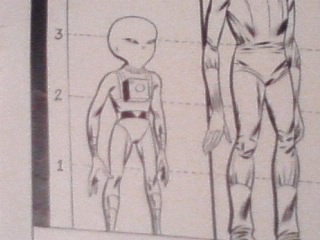
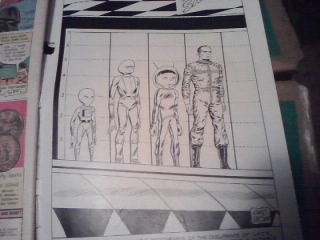
The Box
as Stories Pop Up During the 1970s & 80s abut the Roswell Crash and Grays Close to dying holding this Box for dear Life
as Some Claim that the Box was Back engineered to what is known as the Looking Glass that is similar of what you have seen in the Movie called Contact the The transporter Machine but the Function was more like seeing into the Future or Past as the Rings was Spinning AKA like a Crystal Ball ..
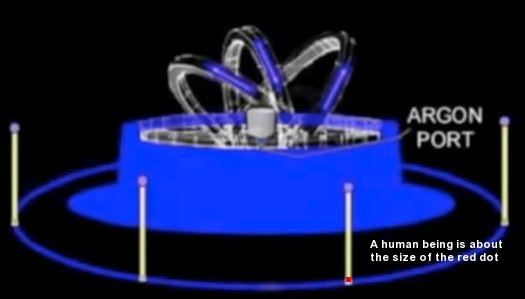
how to time travel ( looking glass)
www.one-mind-one-energy.com...
It all Speculation ..
[ My Own Comic ]
The Front Cover
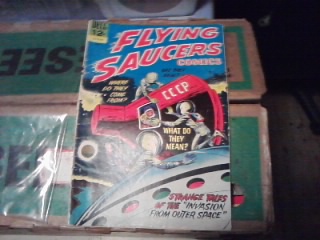
[ Shapes of Kinds of UFOS ]
The Front Inside Cover
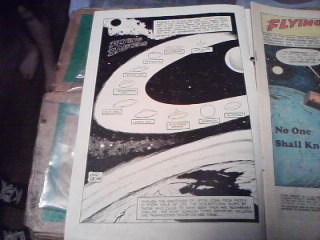
Wolfenz The Roswell Aliens found holding a Box (Cube) close to their Chest!! I don't think I've read that one before... what is the story on that..?
Well if you have this Comic the One that is in your Avatar!
As I have it!
Dell 12c
Flying Saucer Comics ( 1967 )

If you look in the inside Back cover You will see a Alien Grey ( In a Line Up LOL ) that has that same Box on his Chest
Here Just now Ive took the Liberty to Snap a Pic of the Back Cover of that Comic


The Box
as Stories Pop Up During the 1970s & 80s abut the Roswell Crash and Grays Close to dying holding this Box for dear Life
as Some Claim that the Box was Back engineered to what is known as the Looking Glass that is similar of what you have seen in the Movie called Contact the The transporter Machine but the Function was more like seeing into the Future or Past as the Rings was Spinning AKA like a Crystal Ball ..

how to time travel ( looking glass)
www.one-mind-one-energy.com...
It all Speculation ..
[ My Own Comic ]
The Front Cover

[ Shapes of Kinds of UFOS ]
The Front Inside Cover

edit on 16-10-2011 by Wolfenz because: (no reason given)
edit on 16-10-2011 by Wolfenz because: (no reason
given)
edit on 16-10-2011 by Wolfenz because: (no reason given)
new topics
-
Steering the Titantic from the Drydock.
US Political Madness: 2 hours ago -
Paramilitary Leaks - John Williams
Whistle Blowers and Leaked Documents: 11 hours ago
top topics
-
House Passes Laken Riley Act
Mainstream News: 14 hours ago, 23 flags -
What Comes After January 20th
Mainstream News: 16 hours ago, 18 flags -
Los Angeles brush fires latest: 2 blazes threaten structures, prompt evacuations
Mainstream News: 13 hours ago, 7 flags -
Hearing more ambulances lately
Medical Issues & Conspiracies: 13 hours ago, 7 flags -
Paramilitary Leaks - John Williams
Whistle Blowers and Leaked Documents: 11 hours ago, 6 flags -
Those stupid GRAVITE commercials
Rant: 17 hours ago, 5 flags -
Steering the Titantic from the Drydock.
US Political Madness: 2 hours ago, 5 flags -
The more I think about it
General Chit Chat: 14 hours ago, 4 flags -
Canada as a state .. how would it work?
General Chit Chat: 16 hours ago, 4 flags -
Some sausage, some chicken, some sauce, some onions and some garlic...and some peppers!
Food and Cooking: 12 hours ago, 3 flags
active topics
-
Let's Buy Greenland
General Chit Chat • 18 • : CriticalStinker -
Meta Llama local AI system is scary good
Science & Technology • 50 • : ArMaP -
Gravitic Propulsion--What IF the US and China Really Have it?
General Conspiracies • 35 • : bastion -
Steering the Titantic from the Drydock.
US Political Madness • 3 • : ufoorbhunter -
Canada as a state .. how would it work?
General Chit Chat • 17 • : FlyersFan -
-@TH3WH17ERABB17- -Q- ---TIME TO SHOW THE WORLD--- -Part- --44--
Dissecting Disinformation • 3968 • : AianawaQ1320 -
Post A Funny (T&C Friendly) Pic Part IV: The LOL awakens!
General Chit Chat • 8000 • : KrustyKrab -
Los Angeles brush fires latest: 2 blazes threaten structures, prompt evacuations
Mainstream News • 13 • : BeyondKnowledge3 -
House Passes Laken Riley Act
Mainstream News • 16 • : KrustyKrab -
Planned Civil War In Britain May Be Triggered Soon
Social Issues and Civil Unrest • 16 • : Freeborn
5
